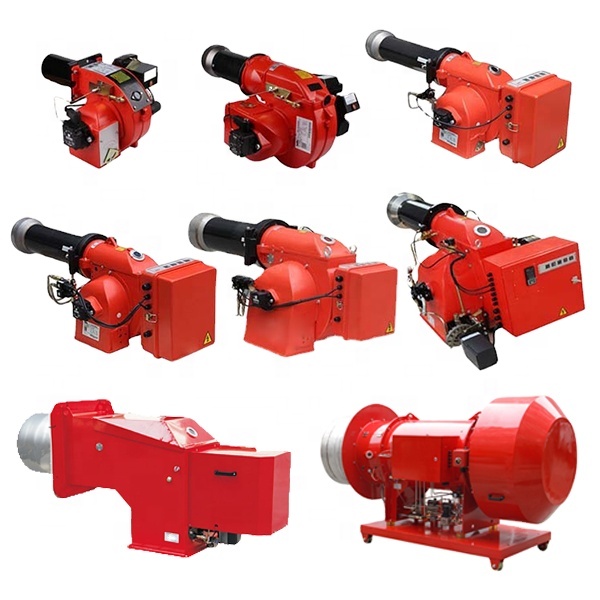
Industrial boiler kiln burner working process description
Three elements of combustion: fuel, ignition source, fuel oxygen.
*Excess air coefficient: the ratio of the actual air volume to the theoretical air volume of fuel combustion.
NOx: NO produced in the combustion process, NO2 is the general name for NOx.
*Natural ventilation-diffusion combustion: The air required for combustion does not depend on the fan or other forced air supply, but depends on the pressure of the natural ventilation or the injected air of the fuel itself to obtain the fuel-oxygen combustion mode.
*Forced air explosive combustion: The air is forced to be supplied by a fan or compressor, most of which are industrial burners.
Premixed combustion: The fuel and air are premixed in proportion before being injected into the combustion.
Burning safety protection device. FSG usually consists of the following parts:
O power supply: used for the operation of the power supply system and the absorption of the relay.
Flame detection part: always judge the flame status
Ignition output: Supply the ignition transformer power to generate the spark required for ignition, and confirm that the normal ignition is automatically turned off to protect the ignition transformer.
o Valve control output: a slight delay on or after the ignition fuel solenoid valve.
Alarm output: When an ignition failure or normal combustion occurs, the fuel valve can be cut off in time and an alarm signal can be output.
Others: Different fsgs are equipped with many different accessories, such as: burner fan pressure switch input, temperature control input, fuel pressure switch input, etc.
Ion flame detection: Using the principle of one-way ionization of high-temperature flue gas, AC voltage is added to the flame to determine whether the current has a certain flame state.
Photoelectric flame detection: The photoelectric sensor uses the photoelectricity of the flame itself to detect the flame state.
Pre-ignition cleaning: The burner is generally equipped with an automatic ignition control device. In order to ensure the safety of initial ignition, before the formal ignition, dilution and cleaning of the combustible gas in the furnace, fresh air can be burned into the furnace. The cleaning time is related to the size of the furnace. It is related to the amount of burner combustion.
After the furnace is shut down, the flame temperature of the burner nozzle can reach more than 1000 degrees during normal combustion, and the burner and combustion chamber can be kept below a certain temperature due to the high temperature flue gas being taken away by the circulating fan. If the burner and the circulation fan are suddenly turned off when the furnace is shut down, the temperature of the burner and the combustion chamber will rise sharply due to insufficient cooling, which will damage the burner and the combustion chamber. Therefore, it is best to use a stop before the combustion chamber temperature is appropriately reduced. The burners with blowing and cleaning functions, that is, the burner fan and the circulating fan continue to run for a period of time, and then stop the fan. In addition, for some large and medium-sized gas furnaces, in order to ensure the accumulation of residual gas in the furnace during shutdown, combustion with post-purging function should be selected.